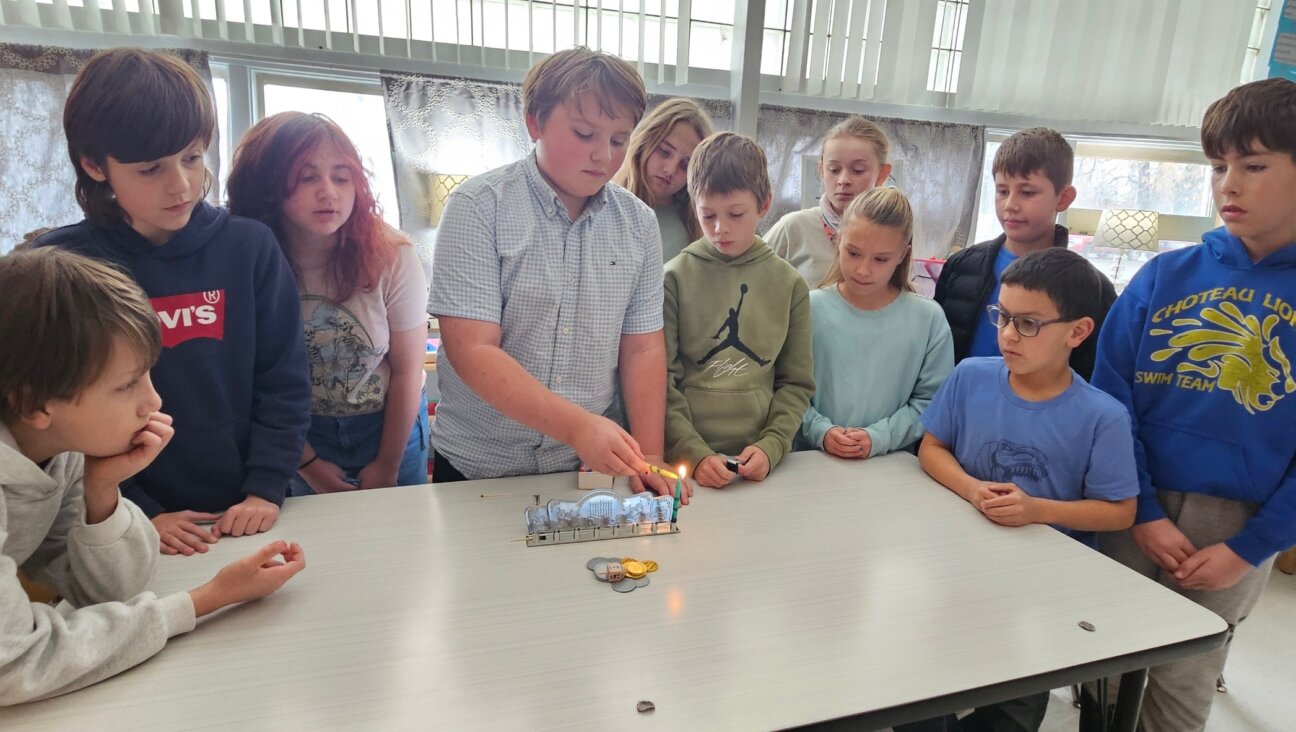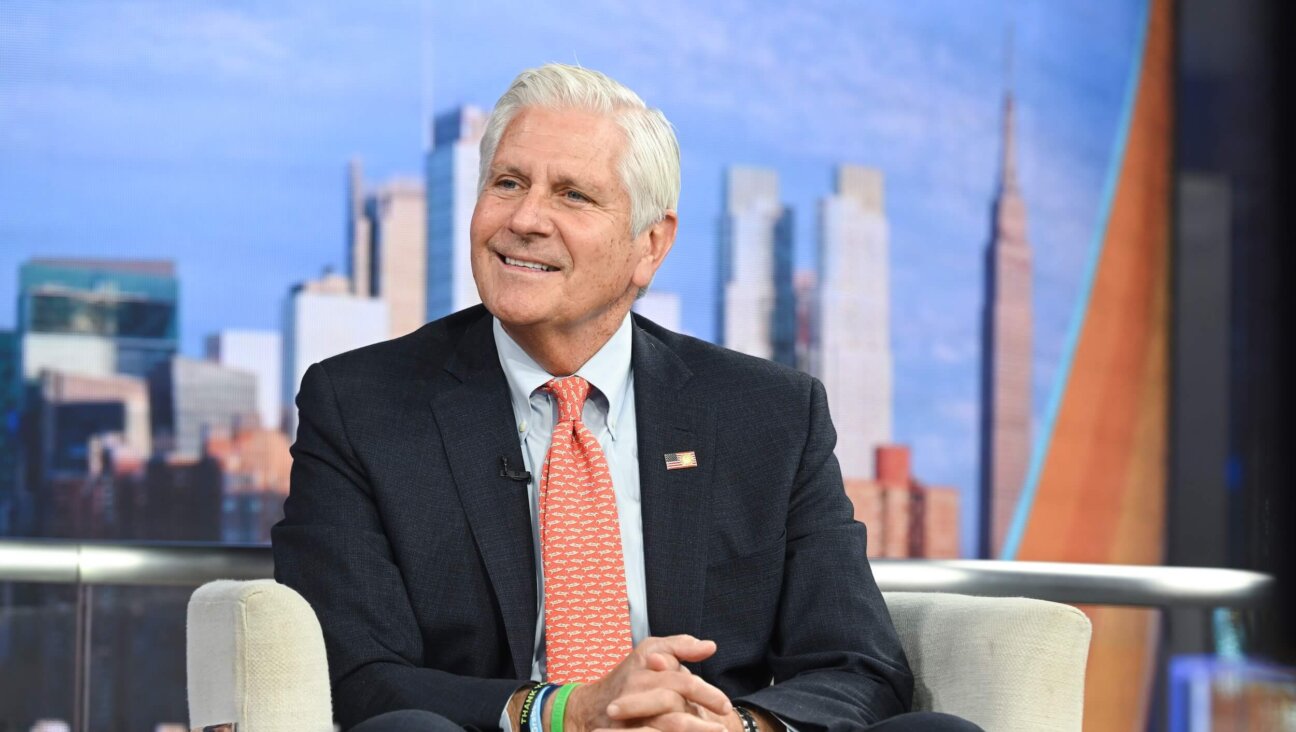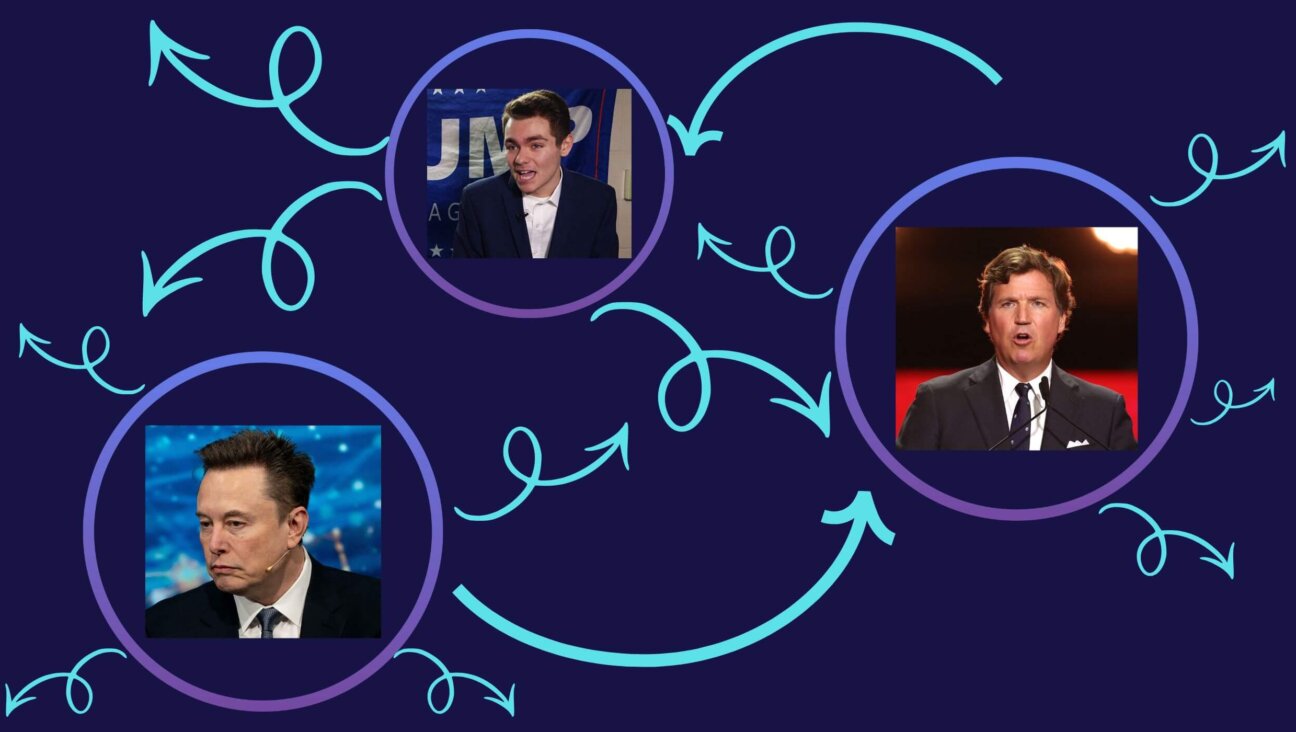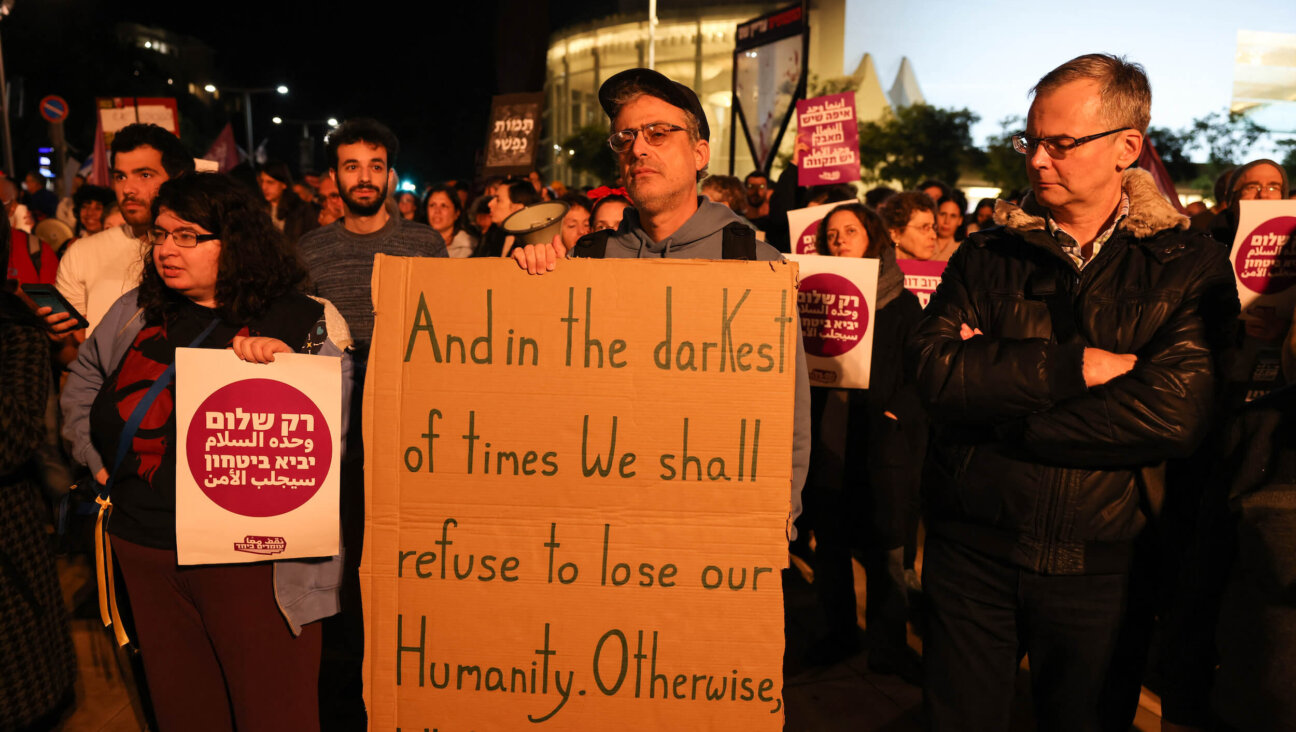Can a visit to Auschwitz really change an antisemite?
A student who made a ‘F— the Jews’ sign was offered a free trip to tour Auschwitz

Holocaust survivor Gidon Lev, European Jewish Association Chairman Rabbi Menachem Margolin, Elon Musk with his son, and Ben Shapiro at the entrance of Auschwitz, Jan. 22, 2024. Courtesy of the European Jewish Association
When two customers at a Philadelphia sports bar asked waitresses to make a sign that said “F— the Jews,” they probably didn’t expect a free trip to Auschwitz.
But that’s what Dave Portnoy, the controversial founder of Barstool Sports — and a proud Jew — initially offered. After firing the two employees involved in the incident, which also implicated a Temple University student, Portnoy said he’d pay for the customers to go on a tour of the Nazi death camp.
By Monday, he had rescinded the offer to the student, accusing him of walking back his apology. But the idea of Auschwitz-as-atonement remains — a now-familiar ritual where the accused antisemite takes a field trip to a Holocaust museum or former concentration camp, sometimes followed by a tearful apology and a media tour.
The question is: Do these field trips work?
“A visit to Auschwitz should not serve as a magic bullet in the fight against antisemitism,” said former Ambassador Deborah Lipstadt, the Biden administration’s antisemitism envoy. “If you’re trying to educate someone, if you’re trying to enlighten someone about their antisemitic attitudes, it’s got to be done within a context of education.”
Lipstadt, an eminent Holocaust scholar, has made more than a dozen trips to Auschwitz. She said context is key to these sometimes-performative publicity stunts: “If you just drop them in Auschwitz, it’s quite as likely they’ll walk out and say, ‘You see, the Nazis hated them too,’” she said. “Antisemitism is not logical. It’s a prejudice.”
The Holocaust-as-deterrent model has its share of high-profile participants. In 2021, Rep. Marjorie Taylor Greene, Republican of Georgia, toured the U.S. Holocaust Memorial Museum after comparing COVID-19 restrictions to the Nazi regime. She emerged from the visit apologizing. “There is no comparison to the Holocaust,” she said.
Five months later, she blamed “vaccine Nazis” for “ruining our country.” She added: “I know I’m using the word Nazi and everybody gets mad when I say it, but that’s exactly what they are.”
In 2024, Elon Musk — facing criticism over antisemitic content on X — toured Auschwitz for International Holocaust Remembrance Day with Jewish conservative commentator Ben Shapiro. Afterward, Musk suggested the Holocaust would not have happened if social media had existed at the time, suggesting the Nazis could not have hidden their crimes.
Lipstadt pushed back against that kind of narrative. “There’s no automatic antidote,” she said. “Things have to be done within a larger framework and a recognition that you’re trying to wean someone off hateful attitudes.”
Education before visits
That framework is exactly what 93-year-old Manfred Korman said is missing in most of these headline-generating pilgrimages. Korman escaped the Holocaust via the Kindertransport in 1939, traveling from Poland to the United Kingdom and eventually arriving in New York in 1940. Today, he regularly speaks to high schoolers about his experience — six speeches in the week in April that coincided with Yom HaShoah — and participates in “Names, Not Numbers,” a program that pairs students with Holocaust survivors for filmed oral histories.
“I’m not opposed to taking people there,” Korman said of trips to Auschwitz. “I am opposed if the history of someone is totally negative, and then suddenly they say, ‘Hey, I’ll commit myself.’ I think that’s a bunch of crap, and I would not take that person because I don’t think it’ll make a damn bit of difference.”
He believes education must come first — ideally for young people, whose views are more malleable. “They need perhaps to meet three or four survivors from various backgrounds and start there,” Korman said. Then, he suggests, take them to the Museum of Jewish Heritage in New York City or the Holocaust Museum in Washington. “And then take them to Bergen-Belsen or Auschwitz because they now have the background perhaps that could persuade them to change their thinking, which was based on fiction or make-believe.”
So far, Temple University has suspended the student allegedly involved in the antisemitic sign incident and is continuing to investigate. It’s unclear whether any education — immersive or otherwise — is part of the school’s disciplinary plan.
Lipstadt isn’t opposed to trying. “That doesn’t mean we don’t try and find ways to fight it,” she said. “Try ways to address it.” But she cautioned against overestimating the power of a single visit. “Just like courses on the Holocaust — some students will walk out recognizing this is what antisemitism leads to, and some won’t.”
Korman, for his part, still believes in the long game. When asked whether he has hope despite rising antisemitism, he didn’t hesitate: “I’m forever an optimist. I know that antisemitism has been around for a long time and will continue to be around for a long time after I’m gone. But I believe there is hope that people change.”















